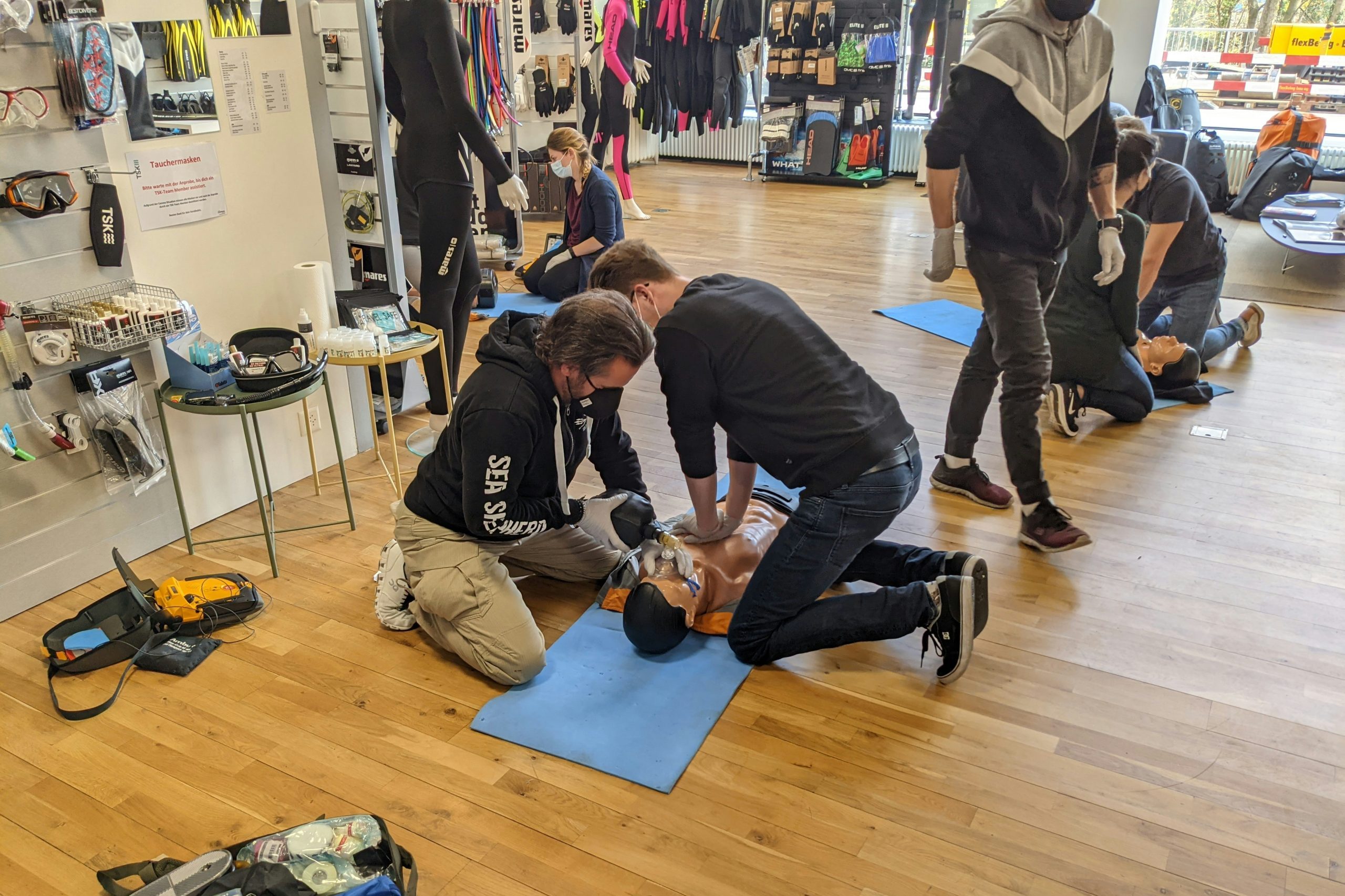CPR procedures
Cardiovascular deaths number in the millions each year and account for about 1/2 of all causes of death. and 60-70% of sudden deaths from cardiac arrest occur prehospital. As a result, approximately 85% of U.S. adults are interested in initial CPR training, resulting in successful resuscitation of 40% of cardiac arrest victims and saving approximately 200,000 lives each year. A person whose heart stops, if initial CPR is implemented within 4 minutes and further cardiac lifesaving by a professional within 8 minutes, has the greatest chance of coming back from the dead, so time is life and speed is key. First determine whether the patient is conscious or not. Pat and shake the patient and ask loudly, finger nail pinch the human middle point for about five seconds, if no response indicates loss of consciousness. At this time, the patient should be made to lie on his back horizontally, unbutton the neck, pay attention to the removal of foreign bodies in the mouth, make the patient tilt his head and lift his chin, use his ear to close to his mouth and nose, if no airflow is felt or no rise and fall of the chest, it means there is no breathing. Specific steps.
1. judgment of consciousness; tap the patient on both shoulders with both hands and ask: “Hey! What’s wrong with you?” There is no response consciousness.
2. Check respiration: observe the patient’s chest rise and fall for 5-10 seconds (1001, 1002, 1003, 1004, 1005…) and the frequency of respiration!
3. Determine whether there is carotid artery pulsation; use the middle finger and index finger of the right hand to scratch the cricoid cartilage from the middle of the trachea to the proximal carotid artery pulsation, whether there is pulsation (count 1001, 1002, 1003, 1004, 1005… and judge for more than five seconds and less than 10 seconds).
4. After the judgment, if there is a need to help, immediately start CPR first aid!
5. Extrathoracic cardiac compressions; at the midpoint of the line between the two nipples (lower middle third of the sternum), press the patient’s chest with the heel of the left palm, overlap the two hands, cock the five fingers of the left hand, straighten the arms deeply, and press 30 times with upper body force (compression frequency 100-120 times/min, compression depth 5-6 cm).
6. Open the airway; tilt the head and lift the jaw method. Confirm that the mouth is free of secretions and dentures.
7. Artificial respiration: 3 to 5 breaths mouth-to-mouth, with a simple respirator if available, with one hand fixed by the “CE” technique and the other hand squeezing the simple respirator, 400-600 ml of air is delivered each time, with a frequency of 10-12 times/min.
8. Continuous 2-minute high-efficiency CPR: cardiac compressions, artificial respiration = 30:2 ratio, 5 consecutive cycles of operation. Use AED apparatus for cardiac resuscitation as soon as possible if there is an AED in the vicinity.
9. To determine whether resuscitation is effective, listen for respiratory sounds and also touch for carotid artery stimulation.
10. Care for the patient and hand the patient over to the hospital physician for further life support.
Generate flow of blood to the heart and large blood vessels through chest compressions. To maintain the minimum blood requirements of the heart, brain and other major organs. The first responder keeps the airway open by placing one hand on the patient’s forehead to tilt the head back and using the other hand to lift the back of the neck or hold the chin up. For suspected neck injury, only the chin should be lifted but not the head tilted back; if a foreign body is suspected in the airway, both hands should be wrapped around the patient’s upper abdomen from the patient’s back and squeezed with force and abruptness. In keeping the patient’s head up and chin up, the rescuer pinches the closed nostrils (or mouth lips) with one hand, then takes a deep breath and quickly blows hard into the patient’s mouth (or nose), then relaxes the nostrils (or mouth lips), and repeats every 5 seconds until autonomous breathing is restored. Each blowing interval of 1.5 seconds, at this time the resuscitator should take a deep breath himself in order to continue mouth-to-mouth breathing until the arrival of professional resuscitators.
CPR operational steps precautions.
The amount of mouth-to-mouth blowing should not be too large, generally no more than 1200 ml, and a slight undulation of the chest is sufficient. Blowing time should not be too long, too long will cause acute gastric dilatation, gastric distention and vomiting. Blowing process should be observed whether the affected (injured) airway is open, whether the thorax is blown up.
Chest heart press can only be performed when the patient’s heart stops beating.
Mouth-to-mouth blowing and chest cardiac compressions should be performed at the same time, strictly according to the ratio of blowing and compressions, too much and too little blowing and compressions will affect the success or failure of resuscitation.
The position of chest cardiac compressions must be accurate. Inaccurate easily damage other organs. The strength of compressions should be appropriate, too large and too violent easily fracture the sternum, causing pneumothorax hemothorax; compressions are too light, the pressure in the chest cavity is small, not enough to promote blood circulation.
When performing cardiopulmonary resuscitation, the affected (injured) person’s clothes button and trouser belt should be loosened to avoid causing internal organ damage.
Pay attention to the resuscitation technique to avoid secondary injury to the patient!

